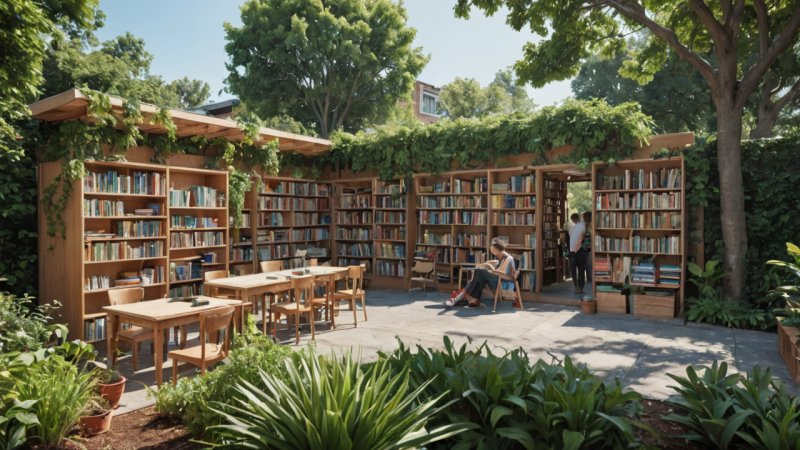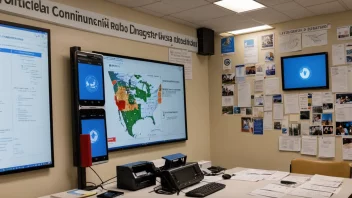In a world increasingly affected by climate change and environmental degradation, the need for sustainable practices has never been more urgent. Community resource libraries focused on sustainability serve as vital hubs for education, resource sharing, and community engagement. These libraries can empower individuals and groups to adopt sustainable practices, reduce waste, and foster a culture of environmental stewardship. This article will explore the steps to create a community resource library for sustainability, highlight successful examples, and offer guidance on how individuals can get involved to make a meaningful impact.
Understanding the Concept of a Community Resource Library
A community resource library for sustainability is a collection of tools, materials, and information that supports sustainable practices within a community. Unlike traditional libraries that focus primarily on books, these libraries may include:
- Tools and Equipment: Items such as gardening tools, compost bins, and energy-efficient appliances that can be borrowed by community members.
- Educational Resources: Books, pamphlets, and digital resources covering topics like permaculture, renewable energy, and waste reduction.
- Workshops and Events: Programs that teach sustainable skills, such as DIY solar panel installation or community gardening.
These libraries not only provide access to resources but also foster a sense of community and shared responsibility towards the environment.
Steps to Create a Community Resource Library
Establishing a community resource library for sustainability involves careful planning and community engagement. Here are the key steps to get started:
1. Assess Community Needs
Before launching a library, it is essential to understand the specific needs and interests of your community. Conduct surveys, hold community meetings, and engage with local organizations to gather insights on what resources and services would be most beneficial.
2. Form a Planning Committee
Gather a group of committed individuals who are passionate about sustainability and community service. This planning committee will oversee the development of the library, including resource selection, programming, and outreach.
3. Identify a Location
Finding a suitable location is crucial for accessibility. Consider partnering with existing community centers, schools, or local businesses that may offer space for the library. Ensure the location is easily reachable by public transport and has adequate parking.
4. Curate Resources
Based on the community's needs, begin curating a collection of tools, educational materials, and other resources. Collaborate with local organizations, environmental groups, and educational institutions to source materials. Consider the following categories:
- Gardening and Landscaping: Tools, seeds, and guides on native plants and sustainable gardening practices.
- Energy Conservation: Energy-efficient appliances, LED bulbs, and resources on reducing energy consumption.
- Waste Reduction: Compost bins, reusable containers, and information on recycling and upcycling.
5. Develop Programming
Hosting workshops and events is vital for community engagement. Plan a calendar of activities that cater to various age groups and interests. Possible programming includes:
- DIY Workshops: Hands-on sessions on topics like solar energy installation, rainwater harvesting, and natural cleaning products.
- Guest Speakers: Invite local experts to discuss sustainability topics, share success stories, and inspire action.
- Community Days: Organize events that bring people together for clean-ups, tree planting, or community gardening.
6. Promote the Library
Effective promotion is essential for attracting community members. Utilize social media, local newspapers, and community bulletin boards to spread the word. Create engaging content that highlights the benefits of participating in the library and attending events.
7. Establish a Membership System
Consider implementing a membership system to track resource usage and foster a sense of ownership within the community. Membership can be free or involve a nominal fee to help sustain the library's operations. Offer incentives such as discounts on workshops or exclusive access to certain resources.
8. Evaluate and Adapt
Regularly assess the library's impact and gather feedback from participants. Use this information to adapt resources, programming, and outreach strategies to better meet community needs. Continuous improvement will help maintain interest and engagement over time.
Successful Examples of Community Resource Libraries
Several communities have successfully established resource libraries focused on sustainability. Here are a few inspiring examples:
1. The Tool Library
Located in Toronto, Canada, The Tool Library allows community members to borrow tools for various projects, from home renovations to gardening. They also offer workshops on tool usage and maintenance, fostering a DIY culture that emphasizes sustainability and resourcefulness.
2. The Green Resource Center
This initiative in Portland, Oregon, provides a range of resources, including tools for gardening and home energy efficiency. They also host educational events that empower community members to adopt sustainable practices.
3. The Seed Library
Many communities have established seed libraries where individuals can borrow seeds for gardening. These libraries promote biodiversity and encourage local food production, reducing reliance on commercial agriculture.
How Individuals Can Get Involved
Creating a community resource library for sustainability is a collective effort, and there are numerous ways individuals can contribute:
- Volunteer: Offer your time to help organize resources, set up events, or promote the library.
- Share Knowledge: If you have expertise in a sustainable practice, consider leading a workshop or writing educational materials for the library.
- Contribute Resources: Donate tools, books, or other materials that can benefit the library and the community.
- Spread the Word: Use social media and word of mouth to promote the library and its offerings to friends and family.
Conclusion
Creating a community resource library for sustainability is an empowering way to foster environmental stewardship and promote sustainable practices within a community. By assessing needs, curating resources, and engaging community members through workshops and events, these libraries can become vital hubs for education and collaboration. As individuals, we all have a role to play in this initiative—whether by volunteering, sharing knowledge, or simply spreading the word. Together, we can build a more sustainable future, one community at a time.






